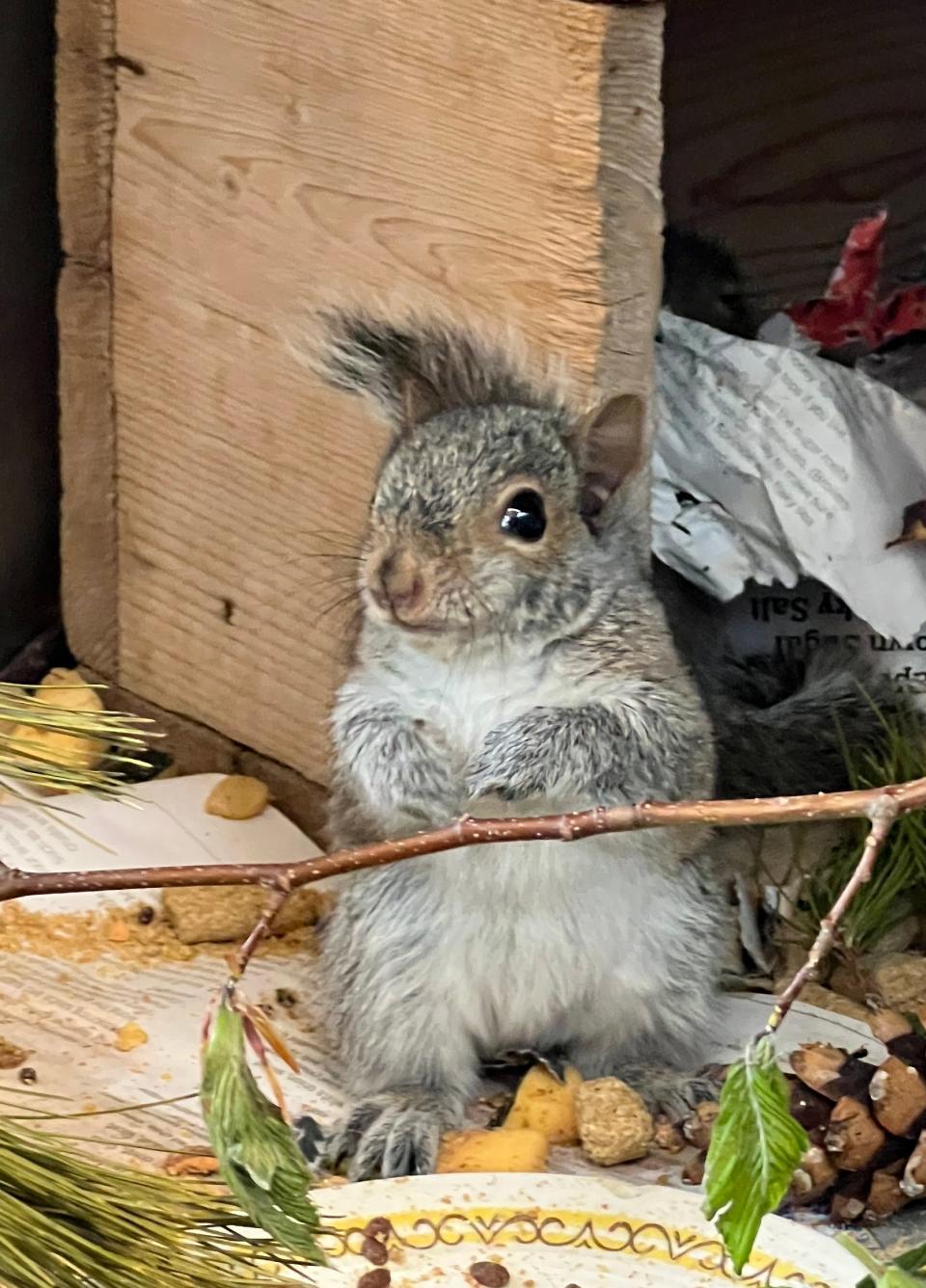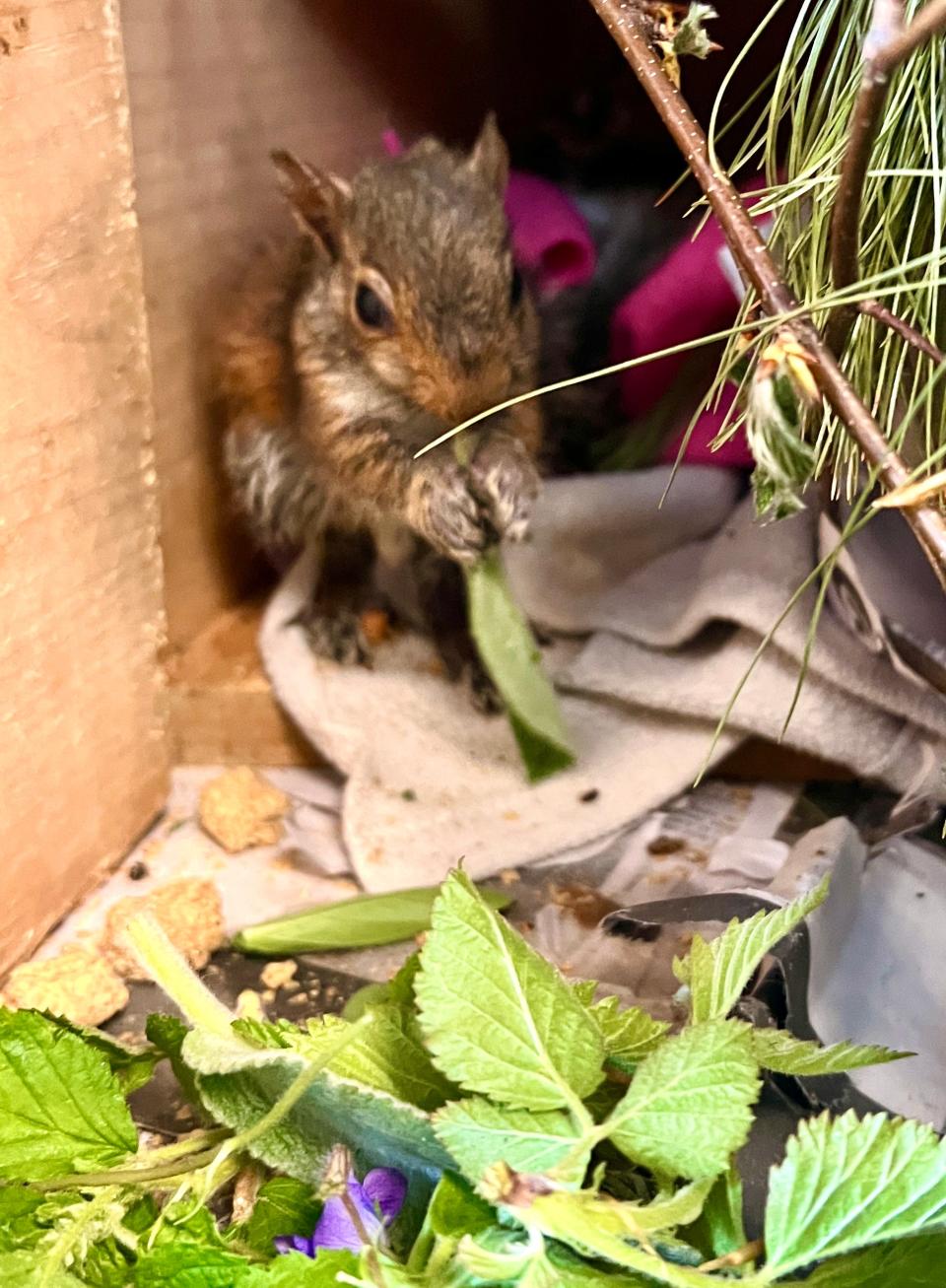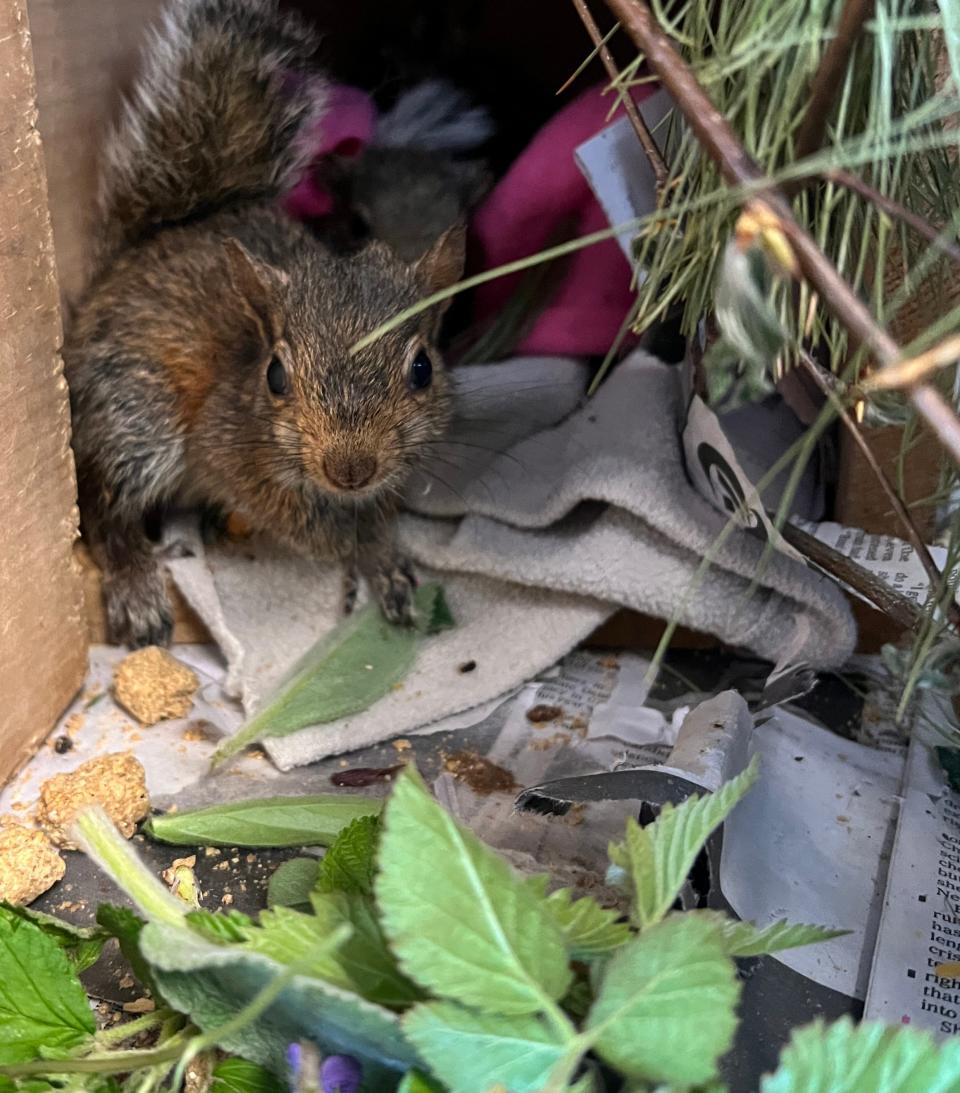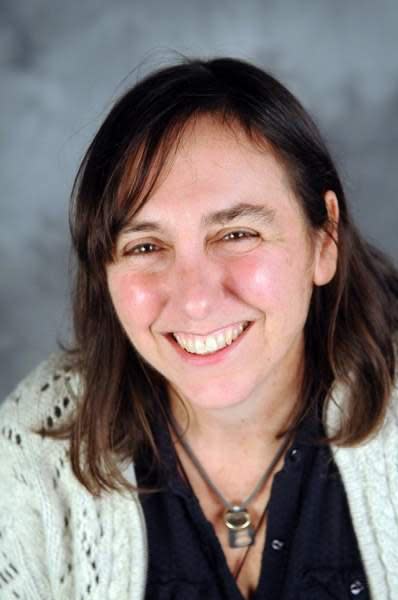What to do if you find baby squirrels: Nature News
I am always looking for an excuse to learn and write about squirrels, so jumped at the chance to visit the latest arrivals at the Center for Wildlife in Cape Neddick in York, Maine — orphaned baby squirrels.
Executive Director Kristen Lamb greeted me with an armful of black birch branches with bright green newly opened leaves. We were going to feed the baby squirrels! If you had asked me what squirrels eat, I would have said nuts and seeds: acorns, pine nuts, all of the sunflower seeds in my bird feeders. But they also eat leaves. The baby squirrels we were visiting had been orphaned from their moms before they were weaned, so in addition to chomping on some leaves they also were fed a special squirrel formula to replace their mother’s milk.

Spring is such a wonderful season in New England. The migratory birds are coming back to feed on our abundance of insects (black fly season just started at my house). Some of our local birds have already claimed or built a nest and laid eggs. Some of those eggs are about to hatch. So too with many of our local mammals.
All of our tree squirrels — gray squirrels, red squirrels and flying squirrels — bred back in January and February and have generally given birth to their spring litter by May. Sadly, young squirrels can be orphaned when their mother (the fathers do not care for their young) is killed — for instance by angry bird watchers who fire BB guns at squirrels visiting their birdfeeders, or by cars while out gathering food.

In addition, spring is frequently yard clean-up time, when squirrel nests are accidently cut down along with tree limbs and trees. This is why there were quite a few gray, red and flying squirrel babies at the Center for Wildlife. Unfortunately, some of these baby squirrels might not have needed to be rescued.

Kristen had some guidelines for what to do if you find a baby mammal — be it a squirrel, opossum (there were some adorable baby opossums at the center) deer or rabbit.
Unless it is clearly injured, just watch it from a distance. More often than not, the mother is nearby and will come retrieve the baby when the coast is clear. This might have been the case for one litter of gray squirrels whose nest had come down with a tree-they might have been just fine, hanging out waiting for their mom. Squirrels make super-insulated nests, called dreys, that can have 30-40 layers of bark, leaves, fur, feathers and sticks that the babies stay in until they emerge at around 11 weeks old, looking like fully-formed adults. The moms make backup dreys as well. If a nest is accidently cut down, the mom probably has a back-up drey to move the babies into. This is why it is critical to leave the babies alone if they look OK.
If you do find any kind of orphaned baby animal or injured animal it is important to call an animal rescue facility, like the Center for Wildlife, for more information. While it might be tempting to try to raise a baby animal at home, most of us don’t have the equipment, training, and information to do this correctly. In the case of the baby squirrels, they aren’t fed some generic formula, their formula is a special recipe developed with their dietary needs in mind. Fat to protein ratios vary by species. For example, a baby rabbit that is raised on the ground and not as well protected from predators needs a higher fat content in its milk so it can develop as quickly as possible. Squirrels are more protected, so have less fat, this isn’t common knowledge. How many of us would know that a baby squirrel would like black birch leaves or that these leaves are good for digestion? Or what to do if the baby escapes in our house?
We are in the midst of peak baby mammal season. I hope I don’t find any injured or orphaned wildlife in my backyard. But if I do, I will start by leaving it alone and waiting to see if it is rescued by its natural mother, not me.

Susan Pike, a researcher and an environmental sciences and biology teacher at Dover High School, welcomes your ideas for future column topics. Send your photos and observations to spike3116@gmail.com. Read more of her Nature News columns at Seacoastonline.com and pikes-hikes.com, and follow her on Instagram @pikeshikes.
This article originally appeared on Portsmouth Herald: What to do if you find baby squirrels: Nature News

